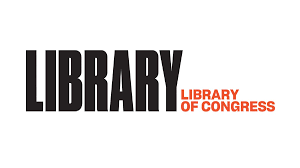Case Study: Customer Experience
Client Context:
The Library of Congress (LOC) Integrated Support Services (ISS) supports LOC facilities infrastructure. ISS Directorate, which includes the Customer Experience Division. LOC desired to create a better work order processing user experience, including the Facility and Asset Management Experience (FAME) built upon the TRIRIGA application platform – Demand Work Order (DWO) system. LOC did not have an existing Quality Assurance / Quality Control (QAQC) program with documented standards for processes and procedures to manage their work order processing. The workflow did not have metrics to measure performance, such as how long an order takes before resolution, customer notifications providing the status of work orders, work order assignee (i.e., task owner), and analytic reports for decision support.
Scope of Services:
LOC engaged with KLS&A to assess the current state of the demand work order processing and establish a Quality Assurance and Quality Control (QA/QC) program containing a review of work activities, customer experience feedback, key performance indicators (KPIs), business processes, and software platforms. During the assessment of the Customer Experience for ISS, KLS&A identified gaps in the organization within the support of the DWO process. Our team uncovered many existing features that were not being utilized and identified four (4) major enhancements – 1) provide the ability to add users by roles; 2) enhance user interface by providing descriptive information during the online workflow; 3) provide self-service support and training tools; and 4) create an executive dashboard for performance monitoring.
How We Helped:
Using a Lean Six Sigma approach, the KLS&A team evaluated the work order process to identify process improvements and customer experience. As an initial data-gathering step to understand the current state, our team facilitated work sessions with the end customer (i.e., employees). Our team documented customer personas and journey maps from these work sessions that captured the existing experience. Several customer types require different levels of support and engagement. In addition, we discovered gaps in LOC’s use of the work order software platform that was identified through the journey mapping process, such as managing case lifecycle from the initial request to closure (including response time), assignment and escalation capabilities of the system using a tiered approach, self-service support (e.g., FAQs, instructional videos, online manuals, etc.), and customer feedback. Our team produced a summary of findings (i.e., Gap and SWOT Analysis) and reported to the Director and Chief Information Officer.
Our team leveraged our findings to inform our recommendations and strategic planning with ISS Director and CIO. Our team facilitated Kaizen sessions to identify areas of performance improvements to improve the customer experience. We identified SMART goals and objectives for the Department to transform the experience into a best-in-class work order operation support center. The goals aimed at sustainability, and therefore, we established an iCOPE – ISS Committee for Operational & Performance Excellence – committee to oversee the implementation and operations of our recommendations. In addition, our team recommended expanded use of the IBM TRIRIGA platform capabilities to monitor case workflow performance, data governance, records management, and customer feedback. In addition, we migrated some features of call center support online by creating FAQs, instructional videos (3–5-minute tutorials), checklists, realignment of online customer navigation (through a human-centered design approach), and manuals. Finally, we recommended and produced wireframes to create an executive dashboard to monitor the overall performance of the work order system, its associated processes, and customer experience. The dashboard was created for the iCOPE team to monitor performance at quarterly intervals.
Through our project engagement, which includes discovering the current state and future planning, our team identified performance measures to capture the customer experience. We identified gaps in the current state but provided a plan to source those measures and track them for future performance monitoring, such as response and competition times, work order accuracy and aging, cost per work order, customer satisfaction, and aggregated information such as compliance, benchmarks, inventory management, and system efficiency.
As a result of our engagement, LOC has increased awareness and adoption of the IBM TRIRIGA work order system, which decreased the use of manual siloed processes and increased satisfaction across LOC.
Our assessment allowed LOC to see the benefits of expanding its use and modernizing the use of the IBM TRIRIGA work order platform to manage assets. Our recommendations were provided to the CIO with business case justification for further investment.

